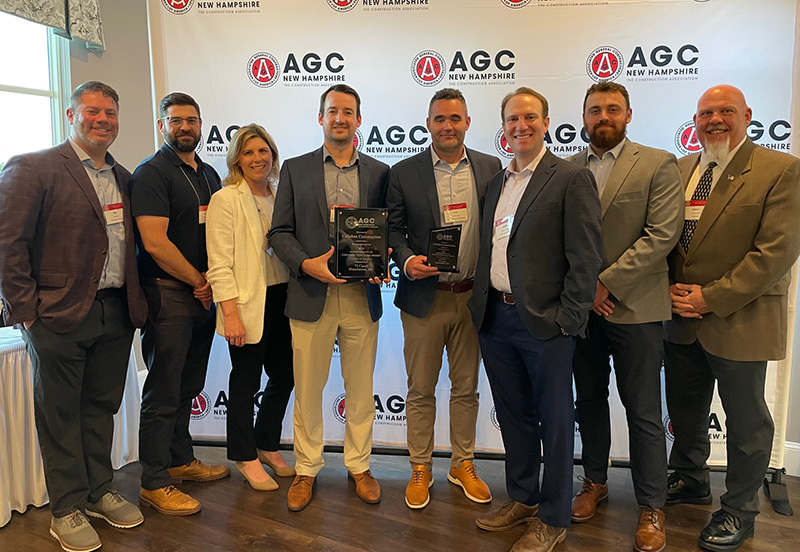News: Construction Design & Engineering
Posted: April 18, 2013
Why nonprofit organizations may want to build real estate into their investment portfolios
Nonprofit organizations seeking to diversify their investment portfolios may want to take a new look at real estate. Traditionally, real estate has been an effective hedge against inflation. In recent years, however, market volatility made many investors wary. Now that the market is on an upswing, this asset class is making a comeback in certain key markets and product types with returns as high as 15-20% in some cases.
Typically, direct investment in high quality individual properties is limited to very large nonprofits. These organizations are usually big enough to have their own investment managers, can diversify their holdings internally and are prepared to absorb the underlying risk associated with individual properties. Generally, they have a team of real estate advisors to help them make informed decisions and manage these types of investments.
Large nonprofits that want the upside return of a private real estate deal but not so much risk, may want to consider limited partnerships that hold interests in 20 or fewer properties. These partnership structures provide broader diversification and thus reduce the risk. Real estate at this level, however, tends to be relationship driven so getting into a deal often depends on who you know.
Smaller, more risk-adverse nonprofits could consider investment vehicles like real estate investment trusts (REITs), mutual funds, real estate stocks and exchange traded funds. All bring with them not only broad market diversification, but also the ability to easily buy and sell holdings in the financial markets.
Core properties, which have tenants with long-term leases, are considered one of the least risky real estate investments. The return here primarily comes from rental income rather than property appreciation. As such, core properties can provide nonprofits with income stability, an important factor in supporting the organization's mission. Commercial office buildings might be a safe bet here, although grocery-anchored retail plazas are also a conservative option. Other possibilities include manufacturing properties, which can be a bit more volatile, and apartment buildings, a popular sector that may be reaching its peak.
Which sector of the market makes the most sense for nonprofits? It all depends on the size of the organization, its portfolio, its structure, its underlying investment goals and its appetite for risk. The purpose of this article is simply to point out how real estate is an investment option for some nonprofits. For others, it may not be a prudent option.
Given the range of real estate investment options available today, it is essential that nonprofits perform due diligence beforehand with the help of experienced real estate advisors. This includes investigating the financial health of the fund, company or partnership, as well as analyzing the specific real estate holdings and likely trends in the market.
Lastly, another way for nonprofits to add real estate to their investment portfolios is through planned giving. Taxes can be a prime motivator for donors with real estate holdings in their portfolios. Some may want to make an outright donation, eliminating any capital gains or other taxes that would be triggered by the sale of a holding. Or the donor may decide to put a real estate investment into a charitable trust that reverts to the nonprofit upon the donor's death.
For all of these reasons, nonprofit organizations may want to start building real estate into their investment portfolios. The risk may be worth the reward for some, but education is key. A smart investment would be working with advisors who understand both worlds—nonprofit and real estate—in order to maximize the benefits and minimize the liabilities. Understanding the risks as well as the rewards is always necessary in any investment, and this is particularly true in the real estate arena.
William Jenczyk, CPA, is a principal in the real estate group at DiCicco, Gulman & Co. LLP, Woburn, Mass.
MORE FROM Construction Design & Engineering
Nobis Group awards Robinson and Moreira STEM scholarships
Concord, NH Nobis Group, a 100% employee-owned consulting firm specializing in engineering and environmental solutions across the Northeast, has named the recipients of its 2025 STEM Scholarship: Andie Moreira of
Columns and Thought Leadership

Careers in Construction Month focus on training and safety - by Joe Camilo
October is Careers in Construction Month, and rarely has it been more consequential. According to our chapter’s national parent organization, the construction industry needs to attract half-a-million new workers in the coming year to meet demand. Addressing that need is a huge job, but we at ABC MA are trying to do our part.

The rise of incubators and co-working spaces: The latest in life sciences - by Matt Combs
In recent years, the life science industry has witnessed a shift in how companies operate and innovate. One of the key driving forces behind this transformation is the emergence of incubators and co-working spaces specifically tailored to meet the unique budget and schedule needs of startups.

Ask the Electrician: Is summer a prime time for commercial electrical maintenance?
The answer is “Yes!” While January marks the official new year, many businesses view September as a fresh start. This makes summer an ideal time for commercial property owners to schedule long-term electrical maintenance projects.

The design-build advantage: Integrated interior design solutions - by Parker Snyder
When it comes to corporate interior spaces for both commercial and industrial projects, partnering with a design-build firm with in-house interior design services can offer clients many benefits. Unlike traditional delivery methods where interior designers operate independently from the design and construction teams, often creating a longer project timeline as cost negotiations and revisions ensue







.png)
